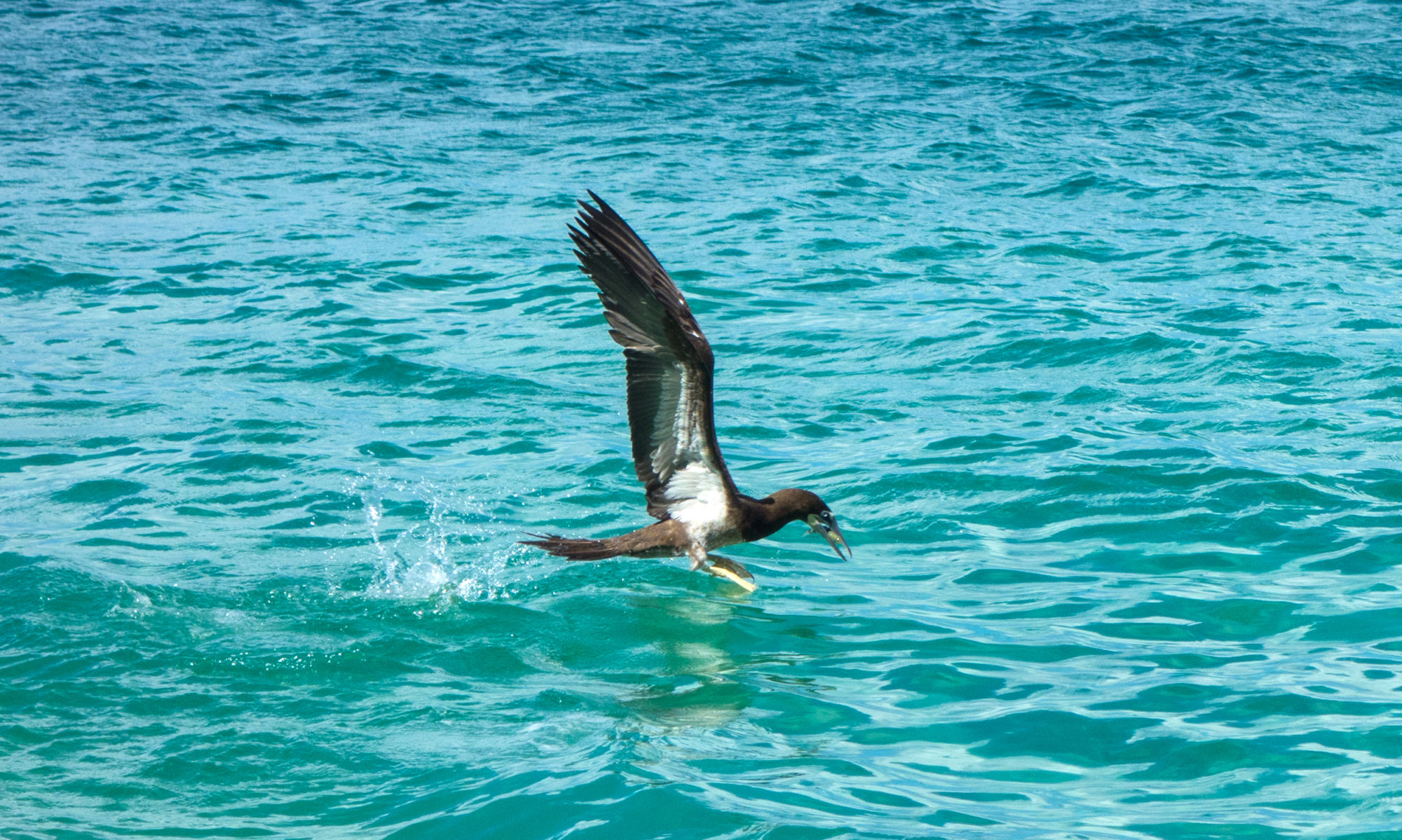Once I had learned how to snorkel, I began exploring Bequia’s coral reefs. The beautiful underwater scenery hosted a wide variety of vividly painted fish, and the gently swaying anemones lent a magical quality to my new-found passion. I spent many enjoyable afternoons floating peacefully over the colourful reefs, spotting new and interesting marine creatures on each occasion. A whole new world had opened up for me, an unusual, fascinating world that that held me spellbound.

Alas, coming into contact with the beautiful coral can be a very painful experience, as I learned when a wave pushed me too close to a reef as I was swimming ashore. The backs of my legs were brushed by the coral and, not realizing what was happening, I thrashed my way to the beach in fright. My legs stung horribly, and a bright red rash was spreading rapidly. It felt as though I had been stung by hundreds of bees, and it hurt!

Mac came to my rescue that day by rubbing fresh lime juice on the afflicted legs, a local remedy that helped ease the painful stinging. He laughed when I told him what had happened, and explained that I must have brushed up against what is most commonly referred to as “fire coral”. I learned a lesson that day, I needed to be more careful when snorkeling over reefs in shallow water! The stinging faded fairly quickly, but the red rash on the backs of my legs remained for several days as a reminder that fire coral is not to be trifled with.

On another occasion I scraped my knee on some coral while snorkeling at Tony Gibbons beach, and gave it little thought. The abrasion bled a little and stung for a while, and by the time I got home the seemingly minor scrape didn’t even merit a band-aid. By the time I went to bed the knee seemed a little stiff, a warning signal that, in my ignorance, I ignored.

The following morning the knee looked angry, and was hot to the touch. I wasn’t alarmed, but DID take the precaution of covering the abrasion with a band-aid. Throughout the day the knee hurt whenever I moved it and, because the knee is a joint, it was moved a lot. By mid-afternoon the pain had increased so much that I removed the band-aid to take a look, and my heart sank; the small, harmless-looking scrape had developed into a badly inflamed, festering sore, it was obviously a bacterial infection that needed medical attention. There was no doctor on the island at that time, but the nurse on duty at the clinic in Port Elizabeth did her best to clean and dress the wound, then advised I use antibiotic ointment and a course of antibiotics.

The infection got worse, a LOT worse, and, when I noticed red streaks running up my leg, I grew quite alarmed. My lymph glands were swollen, and I developed a fever that made me boil up with heat or shiver with cold. Local friends urged me to apply fresh aloe to the knee, but I quickly realized that the medicinal plant’s gooey sap was not the answer, I needed to keep the knee dry. That minor scrape was truly dreadful, it took several weeks for the knee to heal and I will carry the resulting scar for the rest of my life.

I now know a lot more about coral, what a pity I had to find out how dangerous it can be the hard way! Coral is actually a hard, rather stony substance secreted by marine invertebrates, forming an external skeleton that can produce toxic matter. It’s also quite sharp, and a coral scrape can leave small amounts of animal protein in the wound. An open cut exposes the skin to other pathogens floating in the water, and this exposure can, as in my case, result in coral poisoning. The best course of action for a scrape is to immediately wash the abrasion thoroughly with soap and fresh water, then rinse it several times with hydrogen peroxide mixed with water. This cleansing action is important as it will help remove any bits of coral present in the wound. This ritual should be done daily, then coated with antibacterial ointment. Most importantly, the wound needs to be kept DRY, and dips in the sea therefore postponed until the wound has completely healed. In the event infection sets in, a course of oral antibiotics is highly recommended. My dismal experience all those years ago, and the resulting scar, could have been avoided had I known what to do!

Over the years I have noticed many tourists sporting angry-looking abrasions just like mine, and never hesitate to warn them about the perils of swimming in the sea with skin infections. They probably don’t listen to me, but at least I try!



Experience can be a tough task master! Sorry to hear about your encounter with coral and the infection that developed afterwards. I won’t add to the misery by sharing my experience — I’ll just say that with some experiences, we are one time learners. I had my one time at World’s End Reef in the Tobago Cays.
Here’s to good times and good memories!
All I can say is you live and learn!
I learned it the hard way too. Swimming with even the smallest abrasion can lead to a nasty and long lasting infection. Two scars show it